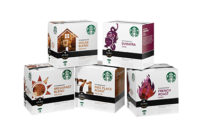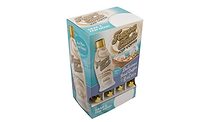![]()
Category Management still a Delicate Balance
by Laurie Russo
Category management, that sometimes confusing and labor-intensive
process of combining elements such as promotions, space management, pricing
and merchandising to form a successful retailing strategy, is constantly evolving.
A recent report from Cannondale Associates, titled Consumer Marketing at Retail
2004: Category Management Benchmarking Study (Differentiation), compares the
views of manufacturers and retailers on the subject, and how they each believe
they can best differentiate themselves from their competitors.
The latest approach, Consumer Marketing at Retail (CMAR) is
more “results-oriented, [and] positions the manufacturer as the insights leader
and enables the retailer as a marketer,” according to the report. Collaboration
— leveraging the strengths of trading partners to create better solutions for
consumers — is seen as crucial. And while retailers are advised by category
management experts to take advantage of the wisdom of category captains, that
may only be half the battle.
Take, for example, the matchless expertise offered by Anheuser-Busch
and Miller Brewing Co. in the domestic beer category. Tom Fox, a partner in
category management consultancy firm CM Profit Group, says, “Category management
is born out of the idea of 'win-win,' so I don't think it's a bad idea that
A-B and Miller want to help the customer, but at the same time help their portfolios...that's
what you could expect from any company.”
But what needs to be understood, he explains, is that
“A-B and Miller are doing a fantastic job of helping retailers, but
it's important to recognize where that help is positioned — primarily
in the premium and below-premium segments.”
The smart retailers, he says, are the ones who take
advantage of that expertise, but also collaborate with the import and
high-end suppliers to learn how to maximize sales of the brands in those
segments.
“A big part of category management is collaboration, and I don't think many retailers do that very well.
They listen to category captains and think they're getting a full-service
message, but they may not be,” he says.
According to the Cannondale report, consolidation has
“homogenized many smaller retailers, Wal-Mart's growth has challenged
other retailers to redefine their point of difference, and channel blurring
has led retailers to compete across so many different formats that the
concept of 'channels' is becoming obsolete. All this creates a greater need
than ever for retailers to find a unique position to hold in shoppers'
minds.”
Fox concurs. “Category management continues to
live today because the channel blurring and consolidation in the
marketplace are demanding that retailers have a better focus on who their
target consumer is,” he says. “If you're going to survive, the
process demands that you understand whom you're trying to
attract.”
The Cannondale report illustrates the five steps of
CMAR that contribute to the differentiation of manufacturers and retailers
alike, using examples from respondents, over half of whom said their CMAR
efforts were differentiating them “very well” or
“extremely well”:
- Differentiation
through issue identification: A major
grocer retailer/wholesaler is working on a revised store footprint, after
sessions with manufacturers indicated that they were following
“conventional wisdom” at the expense of shopper convenience.
- Differentiation
through research and analysis: One manufacturer
used a retailer-specific attitude and usage study to identify means of
building its category sales, enabling it to enhance its position with the
retailer as an indispensable thought leader.
- Differentiation
through action translation: A manufacturer
decided to commit itself to putting to use its large quantity of unused
consumer and shopper learnings by translating key insights into retail
action. Presenting consumer-based rationale for its category solutions
differentiated this company from its competition.
- Differentiation through execution: Recognizing that a new
shelf-management system would have maximum
impact only if fixtures and signage to “reinvent” the category
for shoppers were provided, one manufacturer restored growth to a stagnant
category, thereby catching the attention of both retailer and consumer.
- Differentiation through performance monitoring: One department of a supercenter chain placed a high
priority on testing new concepts in the shopping experience, and the
constant monitoring/ implementing of the results in real time by category
managers have led to much-heralded fact-based decisions.
Then, says Tom Fox, you have to think of what kinds of
services you can provide to cater to that target shopper. “You're
fighting for that shopper,” he explains, “and you have to
figure out how you can get them to drive by a Wal-Mart to come to your
store.”
According to the report, retailers see customized
programs and assortments and improved shelf layouts as the way to go.
Manufacturers, for their part, view consumer/shopper insights and a
collaborative approach as the best way to snag their customer, the retailer.
Manufacturers should figure out ways to present your
message differently, Fox recommends. “Cut through the clutter; be
objective. One of the fundamentals of retail sales effectiveness is to
position your message as to how it helps the retailer, not your
portfolio.” Those suppliers that are segment/category/fact-based vs.
brand-based, and do it with frequency, he says, are the ones that are
consistently at the table.
Other top issues for both sides, according to the
Cannondale report, are execution at retail and new products. But while
manufacturers and retailers agree on many things, opinions diverge sharply
on store brands, with 77 percent of retailers rating their importance as
“very/extremely” valuable, as opposed to 46 percent of
manufacturers. And when it comes to results drivers, 79 percent of
retailers rate “consumer foundation/understanding” as
important, compared with 96 percent of manufacturers. This, says the
report, reflects retailers’ “growing frustration with the
quality and level of consumer insights” brought to the table, or
generic information that does not translate into account-specific retail
action.
Once both sides find that balance — with the help of category
management — says Tom Fox, “they'll not only survive, they'll thrive.”



